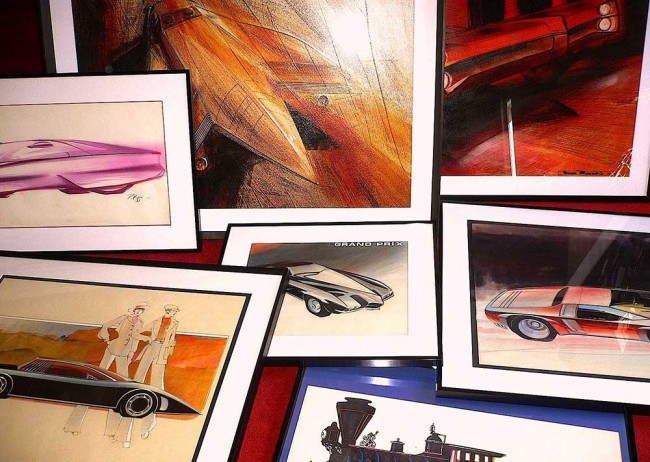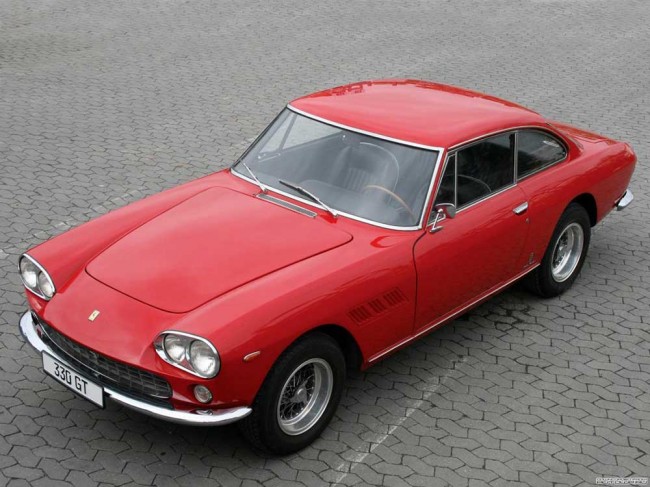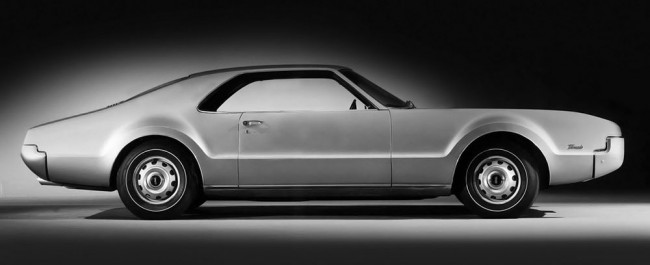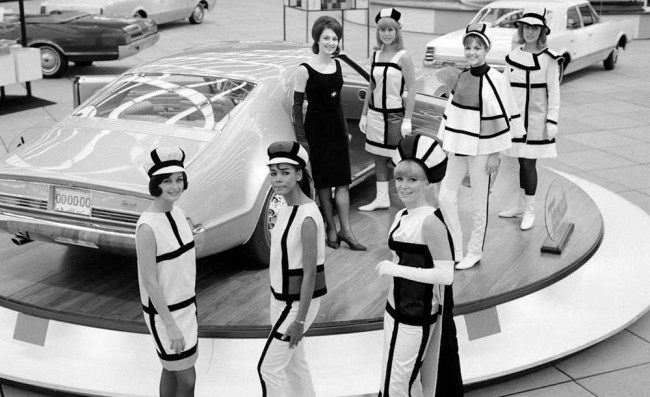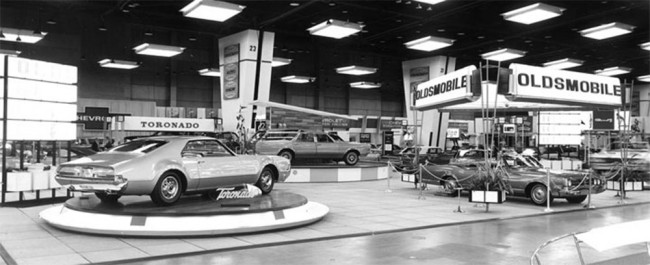Rust dropped out of Yale in 1934 and announced to his father that he was moving to California to open an industrial design firm. His dad wasn’t happy, but a sympathetic aunt in Pasadena took him in. She doted on him, called him Rusty and didn’t pooh-pooh his passion for automobiles. She also noted that Rusty was bright, creative and likable.
In 1936, at age 22, Rust Heinz bought himself a brand-new Cord 810 sedan. After driving the Cord for a while, Rusty made a sketch of the car of his dreams and decided to have Pasadena coachbuilder Bohman & Schwartz build it. Maurice Schwartz himself agreed to hammer out the aluminum body panels. And Heinz’s 1936 Cord would provide the new car’s powertrain: the 125-bhp Lycoming V8, 4-speed pre-selector gearbox and front-wheel drive, all neatly packaged on a self-contained subframe.
The sketches Heinz brought to Bohman & Schwartz amazed both coachbuilders. The drawings showed a long, sleek fastback coupe, and what impressed Maurice Schwartz was that the body shape had no design precedent. Unlike so many car stylists, Rust Heinz hadn’t copied any previous design. He’d come up with a totally original body shape. His radical coupe had an envelope body with uninterrupted “through” fenders, four fully skirted wheels, no discernible grille, no ornamentation, no chrome, no debossed speed streaks, not even door handles. The design was all of a piece, and the form, in fact, was the design; very unusual for that day of fussy art deco and faux streamlining. Heinz decided to call his creation the Phantom Corsair.
The Phantom Corsair had no design precedent. Its shape was totally original and highly advanced, with “through” fenders and skirts over all four wheels.
In May 1937, Rust Heinz married Helen Clay Goodloe in what the Pasadena Star-News described as the social event of the season. The Heinz family in Pittsburgh approved of the bride and thought marriage might help Rusty settle down a bit. It didn’t.
Rust Heinz made the Phantom Corsair the showcase of his budding design operation—a rolling advertisement, so to speak. He also toyed with the idea of having Bohman & Schwartz produce copies of the Phantom Corsair in the future so he could offer them to the public. He created a beautiful brochure and priced the replica Corsairs at $14,700, this at a time when a Packard Six cost $888.
Chris Bohman remembered that, “Rust…kept sketching these cars. One in particular he wanted to build. His family wouldn’t finance it, so his aunt here in Pasadena did. The family hoped he might settle down and get the car out of his system. He’d married Helen Goodloe, and I knew her because I went to school with her sister.” Maurice Schwartz made a wooden scale model of the Phantom Corsair to prove out the shape to himself. Satisfied, he carefully detached the Cord’s semi-unitized body from the cowl rearward and sold that portion of the car to a Hollywood movie studio to use as a prop. The Cord’s front subframe then became the basis for Heinz’s new creation.
Bohman & Schwartz had the A.J. Bayer Co. in Vernon, Calif., fabricate a special chassis to weld to the Cord’s front subframe. The Bayer chassis was made from rectangular chrome-moly steel tubing, the main section consisting of two parallel side rails with a central X-member. The Cord’s stock rear axle was suspended on a custom rear subframe that Bayer bolted to the tops of the main frame rails via steel plates.
Douglas Fairbanks Jr. and Paulette Goddard inspect the Phantom Corsair before launching their 1938 film, The Young In Heart. The car became the movie’s principal prop and, by special effects, one scene features a dealer showroom filled with Corsairs of various colors.
Driving the Corsair can be a bit of an adventure, because outward vision is limited, and it’s hard to judge front and rear overhangs.
Maurice Schwartz then made up the full-sized wooden hammer forms for the Corsair’s aluminum body. Heinz also asked Schwartz to fabricate a full bellypan to aid aerodynamics. The Corsair body, due to its extreme width, overhung the frame rails by a substantial margin, but intentionally so. The side-to-side overhang allowed the skirted front wheels to turn at fairly normal angles, and it also allowed four-abreast seating on the front bench. The fourth passenger sat to the driver’s left.
The Corsair was built specifically to impress potential buyers and design clients, and to that end Heinz added all the technology he could think of. Both of the Corsair’s huge doors opened with electric pushbuttons instead of conventional handles. Simultaneously, little roof flaps flipped up over the doors to ease entry and exit. The massive hood opened and shut with electro-hydraulic rams. The cockpit was entirely lined with a layer of rubber over cork sheeting. The cork was 1.5 inches thick in places. The rear cabin walls had built-in cabinets containing spun aluminum tumblers and a crystal decanter. Two small passengers could sit in the rear, facing each other.
The headlamps were integral “cats-eye” Woodlites, and the bumpers stood on telescoping rams. The instrument panel used the full complement of 1936 Cord gauges plus half a dozen more, including an altimeter, compass and battery-charge indicator. A console above the windshield carried telltales for door ajar, headlights on and radio on. Heinz had plans to install a shortwave radio and thermostatically controlled air conditioning but never got around to it.
To publicize the Phantom Corsair nationally, Rust wrangled a part for it in the 1938 film The Young in Heart, starring Douglas Fairbanks Jr. and Paulette Goddard. In the movie, the Corsair was known as the Flying Wombat. Seeking more publicity, Rust Heinz displayed the Phantom Corsair at the 1939 New York Worlds Fair.
During a visit to his family in Pittsburgh, Heinz decided to go to a dance with friends. On the way home in an open Buick, the driver’s hat flew off. To retrieve it, the Buick driver made a U-turn and was immediately hit broadside by a passing car. Rust Heinz died the next morning, July 23, 1939, of complications due to a skull fracture. He was 25 years old.
The Phantom Corsair stood gathering dust in a Queens warehouse until 1942. That’s when the family gave to it Lou Maxon, head of the Heinz ad agency. The car subsequently passed through several hands and was owned briefly in 1947 by Joe and Andy Granatelli in Chicago. In 1951, Hoosier comedian Herb Shriner bought the car and had Albrecht Goertz (of BMW 507 and Datsun 240-Z fame) revamp the grille so the engine cooled better. In 1971, Harrah’s Automobile Collection bought the Phantom Corsair and restored it back to its original, pristine 1937 configuration. The car is currently on permanent display at the National Automobile Museum (The Harrah Collection) in Reno, Nevada.
The Corsair seats four abreast in front and has two children’s seats in back. Gauges are from designer Rust Heinz’s 1936 Cord, augmented with an altimeter, compass and other dials. The Cord also lent the Corsair its front subframe, including the Lycoming V8 and front-wheel-drive transaxle.
Source: DeansGarage
